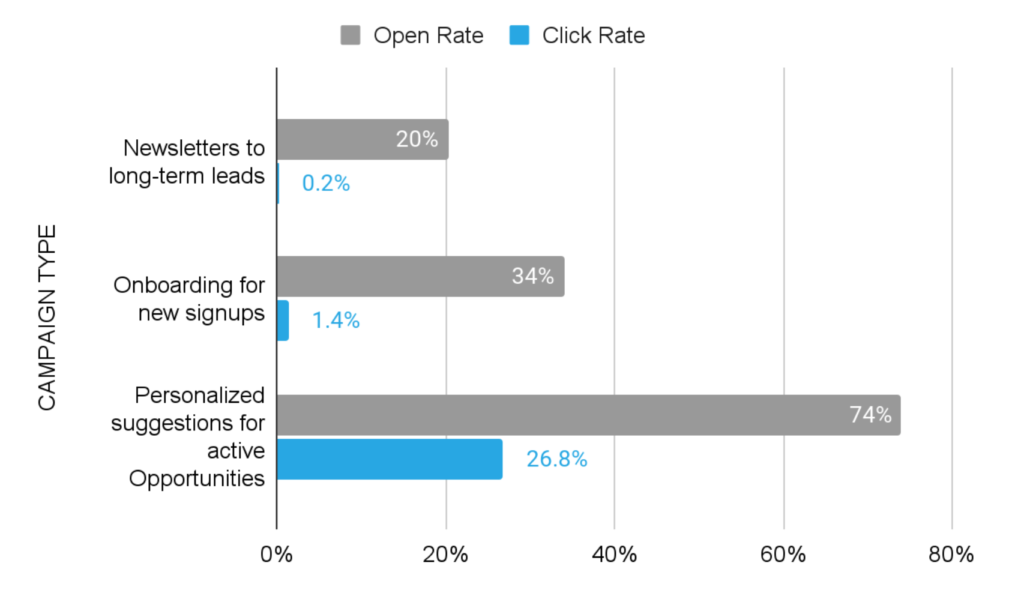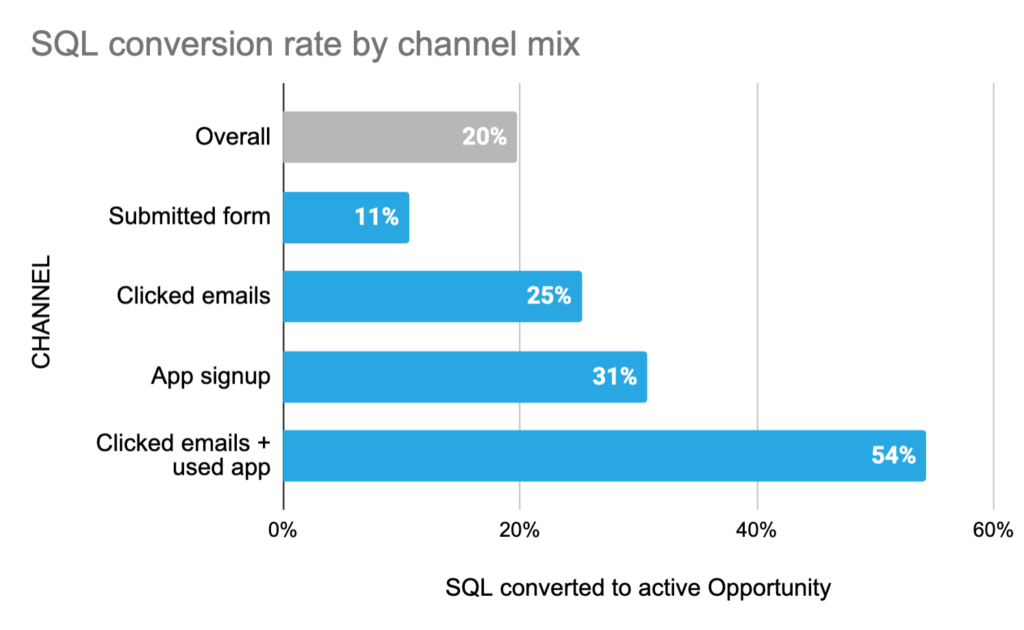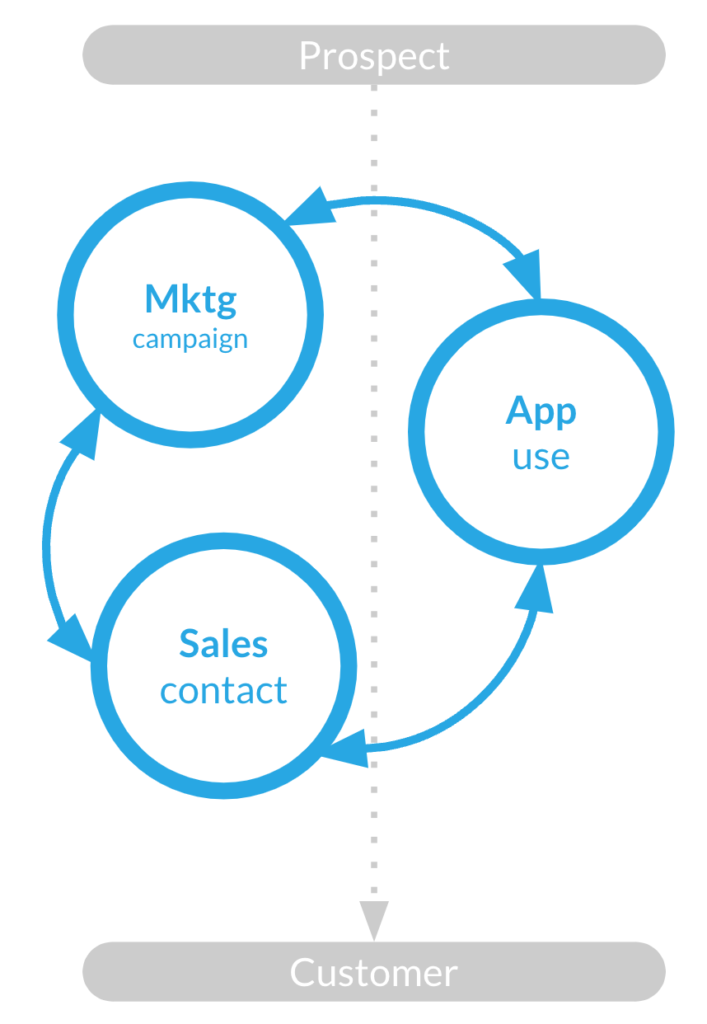For modern digitally transformed services, a new prospect may begin at any of 3 channel entry points: a marketing campaign, an app, or a sales contact. And for any service that warrants a multi-week assessment period, that prospect likely continues through all 3 channels, on a non-linear and iterative path to becoming a customer.
Ideally, as this prospect engages across these channels, relevant prior history informs each touch point. And what is the business value of showing such respect for their time? Here’s some findings from my recent experience:
The third campaign type reported in the chart below automatically sends suggestions from assigned representatives to their qualified sales prospects, based on the prospects’ recent use of a web or mobile app. Dynamically personalizing outreach based on prior activity increases campaign engagement rates by well over 10X. The data covers a one year period from July 2021 to July 2022.

The next chart below shows the percentage of sales-qualified leads who convert to an active opportunity, based on their engagement with product and marketing channels. Omnichannel engagement increases customer conversion rates by 2X – 4X. Again, the data covers a one year period from July 2021 to July 2022.

With performance improvements like this, why doesn’t every business do this everywhere? From first-hand experience, because delivering dynamically personalized omnichannel experiences, requires some uncommon organizational and technological conditions. I’ll dig into the challenges I’ve encountered, in a follow-up post.

